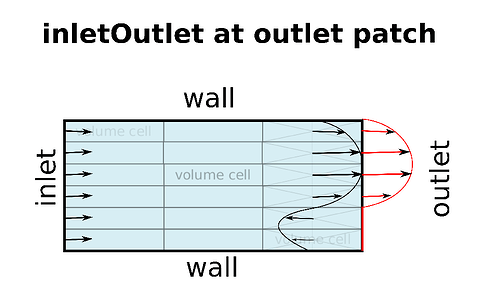Hey guys,
i dont quite understand the boundary condition Inlet and InletOutlet yet.
Does Inlet impose flow in one direction only or is it possible for the flow to change direction and flow outwards aswell?
InletOutlet - From what I have understood it does allow flow in one direction only. So if there was outward flow it would not allow the fluid to pass through?
For the fan pressure bondary condition: Is there a possibility to define both static pressure and flow rate instead of a fan curve? And providing the fan curve, how do I actually find out the operating mode of the fan after simulation (steady-state)?
Hey @kingdeking!
Inlet Boundary Condition (assuming you mean velocity):
The velocity inlet boundary condition defines an inflow condition based on the flow velocity. The inlet pressure and total (stagnation) values are not fixed, hence are calculated but the pressure gradients are fixed to zero value. For the velocity inlet you have to make sure to define another pressure condition for stability.
InletOutlet Boundary Condition:
The inletOutlet boundary condition is normally the same as zeroGradient, but it switches to fixedValue if the velocity vector next to the boundary aims inside the domain (backward flow). The value of that fixedValue is inletValue. (see picture below)
FanPressure Boundary Condition:
The fan pressure custom BC represents the situation where an artificial fan operates at a particular face.
It will create the pressure drop in the specified direction based on the flux/pressure curve. This means that the pressure drop applied on the face is dependent on the flow flux that passes through the BC.
Very nice post by @psosnowski on that topic: Custom Boundary Condition - FanPressure
As far as I know in order to get the operating point you can look that up in a booklet of the manufacturer (if the fan already exists  ) and if you simulate it you need to know the resistance of your system.
) and if you simulate it you need to know the resistance of your system.
Additional information for the IntletOutlet BC:
- If the velocity vector at the outlet points out of the domain it becomes a zeroGradient boundary condition thus a Neumann boundary condition.
- If the velocity vector points into the domain it becomes an inflow with a constant value thus a Dirichlet boundary condition.
Sources:
4 Likes
